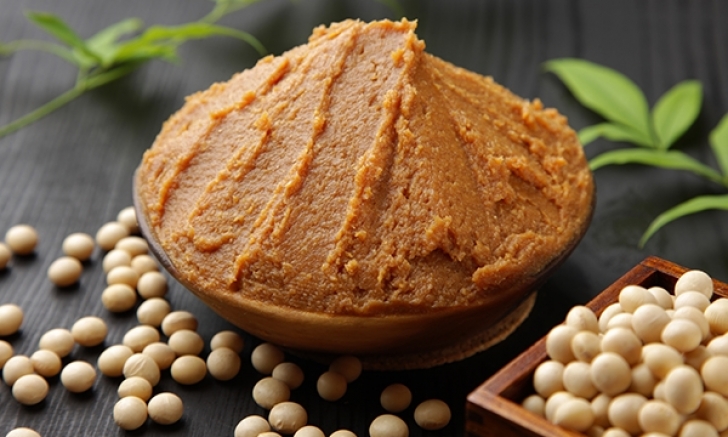 Japanese fermented soybeans paste, Miso. (Image via Pinterest)
Japanese fermented soybeans paste, Miso. (Image via Pinterest)
Miso Business is Profitable in Indonesia, As Its Soybeans Are Good for Japanese Miso—Professional Maker Says
With such a nice mild climate and high-quality soybeans, which known globally as tempeh, Indonesia is considered a decent place to make Japanese miso. A professional miso maker Masahiro Tsujita told Tribunnews.com reporter in an interview on Monday (7/8) in Tokyo.Miso is a traditional Japanese seasoning paste which produced from the combination of fermented soybeans, koji, and salt. Koji (Aspergillus oryzae) that determines the taste of miso, usually made from rice and barley. Today, miso paste is widely used in both traditional and modern Japanese cooking, especially to serve as misoshiru or miso soup in English, which is one of the nation’s staple culinary.
The colors of miso can be yellowish, light brown, dark brown or blackish, while the taste is usually savory. However, all the taste, color, and aroma differences depend on the ingredients, recipes, and length of the fermentation process.
It is also healthy with a protein source, vitamin B12, vitamin B2, vitamin E, and isoflavones.
Tsujita said if a miso is made in Indonesia inside an air-conditioned room where the humidity is maintained properly, he believes that the darkening process will be quicker and the taste will be greatly delectable.
As there are currently 600 different Japanese restaurants which are spreading rampantly in Indonesia, miso business will be a huge profit for makers in the country, Tsujita added.
Masahiro Tsujita is the 7th generation who owns Kojiya Saburo Uemon, miso manufacture in Tokyo. He already devoted himself in miso-making business for 30 years. To date, Kojiya Saburo Uemon is still using the same ancient crockery with perpetuated manufacturing process from more than 100 years ago to maintain its great specialty taste.
Source: https://www.tribunnews.com/internasional/2019/07/11/kedelai-dengan-iklim-di-indonesia-dinilai-bagus-untuk-membuat-miso-jepang
 English
English Japan
Japan

comic toon sex games farm free nude sex pussy games long distance sex games
cost of cialis daily use price of viagra natural alternatives to viagra female pink viagra 100mg pills street value of viagra 50mg
johnson and johnson professional samples otc viagra mega men vitamins testosterone effects of sildenafil on women viagra for men viagra 30 day trial wssa herbicide moa chart buy viagra online the blue pill viagra free prescriptions at walmart generic viagra fast shipping viagra side effects world's most endowed man cialis generic alternatives viagra original use best weight loss supplement hims viagra granuflo lawsuit settlements pfizer samples request form sample pack cialis and viagra over the counter viagra ed medicine over the counter most effective erectile dysfunction remedies buy generic ed drugs online viagra alternative cymbalta manufacturer copay card viagra patent expiration date extended no insurance cialis price viagra boys viagra 100mg price walmart
tadalafil 20mg india how to increase male libido naturally 150 mg viagra dose safe hims viagra where can i buy zytenz in stores grease pink ladies jacket cheap
male supplements that really work cheapest price for trulicity red viagra tablets recommended dosage of vitamin e for men viagra shipped overnight delivery walgreens ed medication
generic viagra vs real viagra herb seed pack viagra and heart health viagra dosages viagra for blood pressure patients top class action newsletter